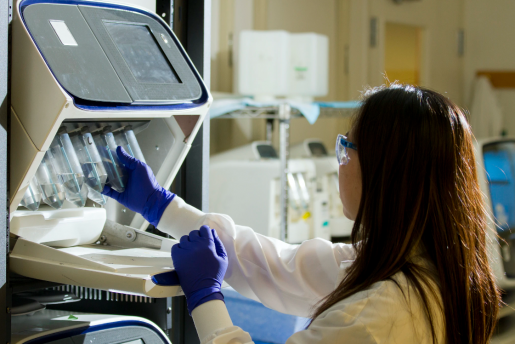Searching for equity in payer coverage of genetic tests
Despite the advancement of clinical genetic tests to diagnose rare diseases and the benefits of identifying a genetic diagnosis for pediatric patients and their families, third-party payers remain a common barrier to accessing clinical genetic tests.
Children of families with private insurance can experience a lack of coverage for genetic tests, high out-of-pocket costs and unexpected bills. Those with public insurance like Medicaid face similar barriers, often with fewer financial resources. Close to 4 million children were enrolled in Texas Medicaid in 2022. While Texas Medicaid mandates the minimum required covered services for enrollees and the fee schedule for those services (which can be adjusted over time), coverage often lags behind professional society recommendations and clinical practice, which more quickly incorporate technological advances.
For example, chromosome microarray (CMA) is a genetic test used to detect deletions or duplications of genes across the genome. Developed in the 1980s, clinicians more broadly implemented CMA in the early 2000s. By 2010, the American College of Medical Genetics (ACMG) recommended that patients with certain symptoms receive a CMA. However, CMA was not added to the Texas Medicaid fee schedule until 2021.
Genetic testing techniques progressed significantly in the intervening years. In 2021, the ACMG recommended newer genetic tests called exome or genome sequencing be completed for these same children and patients. These tests usually have a higher diagnostic yield than CMA and are widely used in clinical genetics. Whole genome/exome sequencing is not included in the Medicaid fee schedule. Texas is not alone in perpetuating this disparity; most state Medicaid programs do not cover these tests, nor do many private payers. The time required for payers to conduct independent reviews of evidence and adjust their coverage remains uncertain, making it hard for payers to change their coverage in a timely manner.
Some genetic testing laboratories and hospital systems are trying to bridge this gap. Earlier this year, multiple Texas pediatric genetics clinics published data evaluating their outpatient genetic test orders. Research showed that a majority of genetic tests recommended for children with Medicaid were not on the fee schedule, but hundreds of tests were still completed, and many were diagnostic. Without obtaining laboratory and hospital financial data, it is unknown how many of these tests were reimbursed. Laboratories and hospital systems likely absorbed these costs, but this reimbursement model is unsustainable in the long term. Many children may not receive the genetic test needed for a diagnosis without guaranteed coverage and reimbursement.
To address this issue, payers, clinicians and laboratories need to work together to improve coverage for medically necessary genetic tests. Genomic stewardship programs designed to ensure patients receive cost-effective and appropriate genetic tests can help facilitate these relationships. Continued research, lobbying and education can also increase access to genetic tests in the future. In the interim, investment in research and creative problem-solving and resource-sharing among clinicians will help enable diagnostic genetic tests for children and combat genomic healthcare inequities.
By Haley Streff, certified genetic counselor, Department of Molecular and Human Genetics, Baylor College of Medicine/Texas Children’s Hospital



